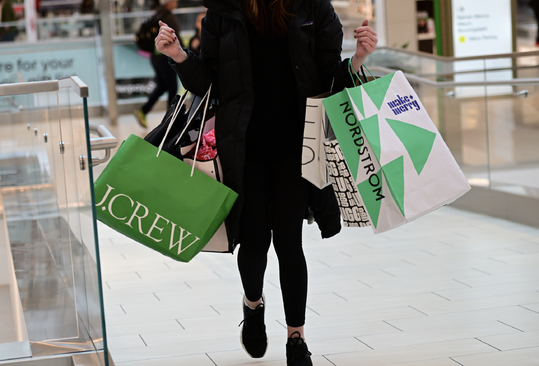Consumer sentiment rises sharply

Americans are losing their inflation jitters, driving a gauge of consumer sentiment to its most bullish level since September 2021. The University of Michigan’s preliminary index for July shot up by 8.2 points, to 72.6. While that’s below pre-pandemic levels, the index climbed even as expectations for near-term inflation ticked up to an annual 3.4%, from 3.3% in June. Joanne Hsu, director of the survey, credited the most recent results “to the continued slowdown in inflation along with stability in labor markets.” Consumer prices rose at an annual 3% last month, a report on Wednesday showed, less than half its 9.1% peak in June — but still above the Federal Reserve’s 2% inflation target.
- Consumers’ perceptions of their current financial situation reached the highest level since last April, while longer-term assessments hit a two-year high.
By Cate Chapman, Editor at LinkedIn News




BY: Sheehan






#Consumer #sentiment highest in nearly two years
▶ Consumer sentiment has jumped to the highest level since September 2021, driven by ongoing disinflation and improved financial situations.
According to the University of Michigan’s survey on Friday, the overall sentiment increased to 72.6 in July, up from 64.4 previously.
▶ After a prolonged period of dealing with elevated inflation, consumers have started to better understand the impact of inflation on their daily lives and have come to accept that persistent inflation will continue for some time. This is reflected in the long-term inflation expectations for the next 5 to 10 years, which have remained in the range of 2.9-3.1% for about 2 years.
📈 With inflation concerns fading and the stock market rising, consumers are feeling much more positive about their financial situations. The subindex for household finances rose to 95, the highest level since early 2022 when the rate hike campaign began. The improved overall sentiment and financial situation suggest a greater inclination to spend in the coming months. According to the survey, spending intentions for major household items, vehicles, and new homes have all increased compared to the previous month.
📉 Interestingly, despite the significant improvement in sentiment, consumers are expecting more job losses in the next 12 months. The unemployment index rose to 84, the highest level since September 2022. This further strengthens the belief that a slowdown in the labor market will continue.
⚠ All the signals from the survey reaffirm our prediction that the economy is approaching a critical point where disinflation and a slowing labor market are occurring simultaneously, making it difficult to determine the eventual outcome—whether it will be a soft landing or a hard landing—at the end of the rate hike cycle. Certainly, the probability of a soft landing has significantly increased based on today’s data on sentiment and recent data on inflation and the job market.
🔺 However, this also complicates the Federal Reserve’s task, as the line between doing too much and doing too little has become thinner. Therefore, achieving a balance between the dual mandates of price stability and employment growth will require a more cautious approach, making a pause after the July meeting more favorable than a premature rate cut or further tightening.